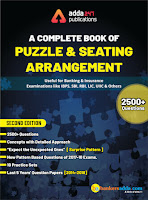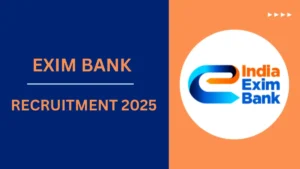IBPS RRB PO/Clerk Reasoning Quiz
Do you follow a proper plan or strategy for IBPS RRB Mains 2019? Are you aiming IBPS RRB 2019 this time? If yes, then this is the section which can help you to do wonders if practiced well. A good attempt with a mix of accuracy can help you fetch good marks. The reasoning is a game of wits and mind. It is all about logics that a question may have. Speed and accuracy are what that matters the most in this section. The only way to achieve an ambitious goal is by practicing only. So, attempt the quiz of Reasoning ability that inculcates the important questions from the important topics. Do not miss out to practice the Reasoning ability quiz that is being provided on bankersadda.
Directions (1-5): Read the given information carefully and answer the given questions.
Six players are belonging to different cities. All of them like different games. Each player has a different weight. S’s weight is more than only 2 persons and he belongs to Kochi. The one who belongs to Jaipur has weight more than T’s weight but less than U’s weight. The one who likes Cricket belongs to Jaipur. R doesn’t like Cricket. P’s weight is more than R but less than Q. Q belongs to Pune and T likes Hockey. The one, who is heaviest, has 85kg weight and likes Badminton. T is not the person who has lowest weight. U doesn’t like Badminton. The one who likes Kabaddi doesn’t belong to Kochi and he is not the person who has the second-heaviest weight. P’s weight is 60kg. The one who has 75kg weight and likes Tennis and belongs to Lucknow. R doesn’t belong to Mumbai. The one who has lowest weight is 48kg. The one who belongs to Kolkata does not like football.
Q1. Who among the following persons belongs to Kolkata?
(a)S
(b)Q
(c) R
(d) P
(e)None of these
S1. Ans.(c)
Sol.
Q2. Who among the following person is 75kg?
(a)Q
(b)U
(c)R
(d)P
(e)None of these
S2. Ans.(b)
Sol.
Q3. How many persons are lighter than Q?
(a)None
(b)Two
(c)Four
(d)Five
(e)Three
S3. Ans.(d)
Sol.
Q4. The one who likes badminton belongs to which city?
(a) Pune
(b)Jaipur
(c)Mumbai
(d)Lucknow
(e)None of these
S4. Ans.(a)
Sol.
Q5. The person who is lightest in the group likes which of the following games?
(a)Cricket
(b) Kabaddi
(c) Tennis
(d)Football
(e)None of these
S5. Ans.(b)
Sol.
Directions (6-8): In these questions, the relationship between different elements is shown in the statements. The statements are followed by conclusions. Study the conclusions based on the given statements and select the appropriate answer:
(a) If only conclusion I follows.
(b) If only conclusion II follows.
(c) If either conclusion I or II follows
(d) If neither conclusion I nor II follows.
(e) If both conclusions I and II follow.
Q6. Statements: W≤A≤C<M <D=O>G>X
Conclusion I: W≤M II: O>A
(a) If only conclusion I follows.
(b) If only conclusion II follows.
(c) If either conclusion I or II follows
(d) If neither conclusion I nor II follows.
(e) If both conclusions I and II follow.
S6. Ans(b)
Sol.
I: W≤M(False)
II: O>A(Tru
(a) If only conclusion I follows.
(b) If only conclusion II follows.
(c) If either conclusion I or II follows
(d) If neither conclusion I nor II follows.
(e) If both conclusions I and II follow.
Q7. Statements: L>P≥E≥ R>Q=O=N≤F
Conclusion I: P≥Q II: N>E
(a) If only conclusion I follows.
(b) If only conclusion II follows.
(c) If either conclusion I or II follows
(d) If neither conclusion I nor II follows.
(e) If both conclusions I and II follow.
S7. Ans(d)
Sol.
I: P≥Q (false)
II: N>E(False)
Q8. Statements: Q>D< C>B>J≥P >W≤S
Conclusion I: C>S II: C≤S
(a) If only conclusion I follows.
(b) If only conclusion II follows.
(c) If either conclusion I or II follows
(d) If neither conclusion I nor II follows.
(e) If both conclusions I and II follow.
S8. Ans(c)
Sol.
I: C>S(False)
II: C≤S (False)
Directions (9-10): In the following questions, the symbols @, #, %, $ and © are used with the following meaning as illustrated below-
‘P#Q’ means ‘P is neither greater than nor equal to Q’
‘P*Q’ means ‘P is neither equal to nor smaller than Q’
‘P%Q’ means ‘P is neither smaller than nor greater than Q’
‘P$Q’ means ‘P is not smaller than Q’
‘P@Q’ means ‘P is not greater than Q’
Now in each of the following questions assuming the given statement to be true, find which of the three conclusions I, II and III given below them is/are definitely true and give your answer accordingly.
Q9. Statements: O*K, M*L, M%N, P#N, K@L,
Conclusions: I. N#L II.M*O III. L$P
(a) None is true Conclusions
(b) Only I is true
(c) Only III is true
(d) Either I or II are true
(e) None of these
S9. Ans(a)
Sol.
I. N#L (false) II. M*O (False) III. L$P (False)
Q10. Statements: S%Q, P#Q, U@T, P@R, T#R
Conclusions: I.T#Q II. R*U III.R$Q
(a) Only I and III are true
(b) Only II and III are true
(c) Only I and II are true
(d) All are true
(e) None of these
S10. Ans(e)
Sol.
I. T#Q (false) II. R*U (true) III. R$Q (False)
Directions (11-15): Each of the questions below consists of a question and two statements numbered I and II given below it. You have to decide whether the data provided in the statement are sufficient to answer the question. Read both the statements and Give answer:
Q11. Who among J, K, L and M reached office first?
I. J reached office after L and before M but did not second last to reach office
II. K reached office after M
(a) If the data in statement I alone are sufficient to answer the question, while the data in statement II alone are not sufficient to answer the question.
(b) If the data in statement II alone are sufficient to answer the question, while the data in statement I alone are not sufficient to answer the question.
(c) If the data either in statement I alone or in statement II alone are sufficient to answer the question.
(d) If the data even in both statements I and II together are not sufficient to answer the question.
(e) If the data in both statements I and II together are necessary to an (a) If the data in statement I alone are sufficient to answer the question, while the data in statement II alone are not sufficient to answer the question.
S11. Ans (a)
Sol.
L>J>M>K
Q12. Among A, B, C, D and E each one of them has different height, who among the following is the second shortest?
I. D is taller than A and B
II. E is shorter than C and taller than D
(a) If the data in statement I alone are sufficient to answer the question, while the data in statement II alone are not sufficient to answer the question.
(b) If the data in statement II alone are sufficient to answer the question, while the data in statement I alone are not sufficient to answer the question.
(c) If the data either in statement I alone or in statement II alone are sufficient to answer the question.
(d) If the data even in both statements I and II together are not sufficient to answer the question.
(e) If the data in both statements I and II together are necessary to answer the question.
S12. Ans (d)
Sol.
C>E>D>A/B>A/B
Q13. There are five persons in a family namely P, Q, R, S and T. How is S related to P?
I. T is cousin of P and son of Q, who married to S
II. R is father of P and brother of S. Q is wife of S
(a) If the data in statement I alone are sufficient to answer the question, while the data in statement II alone are not sufficient to answer the question.
(b) If the data in statement II alone are sufficient to answer the question, while the data in statement I alone are not sufficient to answer the question.
(c) If the data either in statement I alone or in statement II alone are sufficient to answer the question.
(d) If the data even in both statements I and II together are not sufficient to answer the question.
(e) If the data in both statements I and II together are necessary to answer the question.
S13. Ans (b)
Sol.
Q14. Among A, B, C, D, E and F are sitting in a circle facing center, who among the following person sit immediate right of D?
I. A faces B. only one person sit between B and D.
II. D sits second to the right of A, Who Sits immediate left of C.
(a) If the data in statement I alone are sufficient to answer the question, while the data in statement II alone are not sufficient to answer the question.
(b) If the data in statement II alone are sufficient to answer the question, while the data in statement I alone are not sufficient to answer the question.
(c) If the data either in statement I alone or in statement II alone are sufficient to answer the question.
(d) If the data even in both statements I and II together are not sufficient to answer the question.
(e) If the data in both statements I and II together are necessary to answer the question.
S14. Ans(d)
Q15. Eight box are placed one above other which of the following box is placed immediately above the Box H?
I. Three Box are placed between Box B and F, which is placed immediately above box L.
II. Three box are placed between Box L and Box H. Box L is placed below box H.
(a) If the data in statement I alone are sufficient to answer the question, while the data in statement II alone are not sufficient to answer the question.
(b) If the data in statement II alone are sufficient to answer the question, while the data in statement I alone are not sufficient to answer the question.
(c) If the data either in statement I alone or in statement II alone are sufficient to answer the question.
(d) If the data even in both statements I and II together are not sufficient to answer the question.
(e) If the data in both statements I and II together are necessary to answer the question.
S15. Ans(d)
You may also like to Read:
- Check the Study-related Articles Here
- Study Notes for All Banking Exams 2018
- Bankers Adda Daily Questions for SBI PO, IBPS PO Clerk & Bank Exam













 GA Capsule for SBI Clerk Mains 2025, Dow...
GA Capsule for SBI Clerk Mains 2025, Dow...
 The Hindu Review October 2022: Download ...
The Hindu Review October 2022: Download ...
 Exim Bank Recruitment 2025, Apply Online...
Exim Bank Recruitment 2025, Apply Online...





